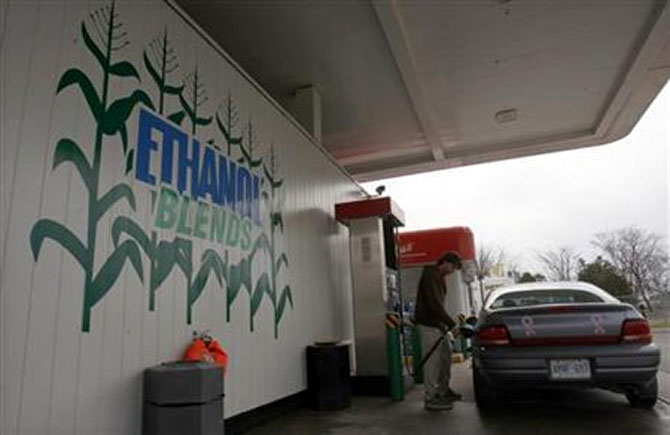India’s plan to produce ethanol from second-generation (2G) sources — mainly farm waste — is taking time to materialise even as the government is set to dedicate to the nation on Wednesday a Rs 900-crore plant set up by Indian Oil Corporation (IOC) in Panipat.
Though state-run oil companies had decided to set up at least 12 plants in 2016-17 with an investment of around Rs 10,000 crore, this will be the first unit coming on track while others are stuck in various stages owing to issues like capital expenditure, lack of feedstock, and high rates of finished products compared to traditional ethanol units.
According to industry sources, three more second-generation plants are coming up.
They are in Bathinda, Punjab (Hindustan Petroleum Corporation, or HPCL); Bargarh, Odisha (Bharat Petroleum Corporation, or BPCL); and Numaligarh, Assam (Numaligarh Refinery).
Each of these four units has got a financial assistance of around Rs 150 crore from the government.
Of the 12 units planned by state-run companies, HPCL is expected to come up with four, IOC and BPCL with three each, Mangalore Refinery and Petrochemicals with one, and the Numaligarh Refinery also with one.
Private-sector companies have lined up 16 units and a majority of them are still stuck at various stages of execution.
Reasons for the delay
Ethanol is classified into first-, second-, and third-generation, depending on the raw material used in production.
In first-generation ethanol, raw materials used are food sources like sugarcane and seeds, while second-generation ethanol uses farm waste after harvest like rice husks, corn cobs, wheat straw, and sugarcane bagasse.
In third-generation ethanol, algae grown in wastewater or salt water are used as raw material.
“In second-generation, raw materials should be first converted into sugar and the enzyme used for that is still not manufactured in India.
“While a first-generation plant can be built for around Rs 150 crore, a second-generation one of the same size requires around Rs 900 crore,” said Abinash Verma, a sugar industry expert and former director-general of the Indian Sugar Mills Association (ISMA).
Collecting paddy straws in India will not be easy for companies setting up second-generation units, he said.
The idea of coming up with more second-generation plants was initiated after stubble burning started becoming a major cause of pollution in the National Capital Region.
Hence, industry experts are indicating that social benefits should be a point of concern while considering second-generation plants rather than looking at mere financial benefits.
“Even ethanol produced from this is not commercially viable for consumers because it may cost you around Rs 120 a litre as against around Rs 60 a litre range for first-generation units,” Verma added.
The Panipat plant, according to the government, is based on state-of-the-art indigenous technology and will utilise about 200,000 tonnes of rice straw (parali) annually to generate around 30 million litres of ethanol a year.
India has set a target of blending 20 per cent of petrol with ethanol by 2025 and to achieve this, the country should produce 10-11 billion litres, of which 6-6.5 billion litres will come from sugarcane and the rest will have to be contributed by corn- and grain-based sources.
To produce this, a capacity for 12 billion litres will have to be installed.
Of that 6.5-7.0 billion litres would be from sugarcane and the rest from corn-based distilleries.
As in 2021, the capacity is about six billion litres.
Of that sugarcane sources contribute 5.25 billion litres while that from corn-based distilleries is just 750 million litres.
Therefore, to achieve the 20 per cent blending target, grain-based distillation must pick up more pace than sugarcane-based ethanol.
Photograph: Reuters
Source: Read Full Article

